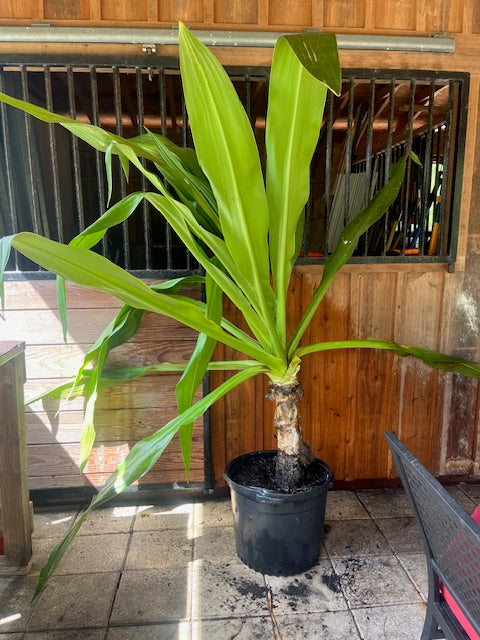OrchidTreeGardens
Crinum americanum (6) Rooted Plants!!!! A/k/a swamp liliy
Crinum americanum (6) Rooted Plants!!!! A/k/a swamp liliy
Couldn't load pickup availability
Crinum americanum aka swamp lily
In this order you will receive 1 live plant & 3 bulbs
Swamp lily is an emersed plant that is frequently found growing in swamps, marshes, and wet hammocks. It is a fragrant native. There are four species of Crinum in Florida (Wunderlin, 2003). Swamp lily is found in the southeastern U.S. (Kartesz, 1999). The delicate and fragrant swamp lily is a Florida native. It grows in wetlands and along streams throughout the state.
The swamp lily is a perennial herb, with an onion-like bulb. The leaves are erect to spreading. Leaves are strap-like, up to 3 feet long and 3 inches wide. Swamp lily flowers arise from the bulb on a long flower stalk that is separate from the leaves. Two to six flowers occur at the tip of the flower stalk. The long flower tubes are 4 to 6 inches long. Swamp lily flowers are white, or white and pink, and are fragrant. They have 6 petals. The fruit is a capsule, with large, fleshy seeds. Swamp lilies may be confused with spider lilies (of the genus Hymenocallis). Remember that swamp lily flowers have 6 separate petals. Spider lily flowers have petals that are connected by membranous tissue. The swamp lily flower has long, wide, strap-like leaves, its flowers are on long stalks. Swamp lily flowers are white and fragrant, with 6 separated petals.
The bulb contains alkaloids, notably lycorine and crinamine[283
The plant contains cytotoxic alkaloids that have antitumor properties and are antibacterial
The juice of the fresh bulb is used as an emetic
A preparation of the root is given to aid childbirth and for postpartum haemorrhage
The bulb is chewed as an antidote for wounds of poisoned arrows and poisonous reptiles, and also as a remedy for sickness caused by eating poisonous fish
A poultice made from the heated, pounded, fresh bulb is used to relieve osteodynia and rheumatism
The juice of the fresh bulb is instilled in the ear to treat otitis[283
A poultice of the heated, pounded, fresh leaves is used to treat contusions, sprains, fractures, luxations etc
A decoction of the dried leaves is used as a wash in the treatment of haemorrhoids
The juice from the squeezed leaves is applied to cuts and wounds
The hairlike threads from the stem are used to poultice cuts
Share





